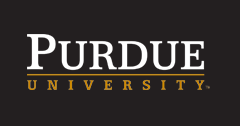Keywords
nanoindentation, molecular crystal, griseofulvin
Presentation Type
Event
Research Abstract
Nanoindentation has made it possible to test material properties of extremely brittle molecular crystals, which include many pharmaceuticals. An antifungal, griseofulvin, is tested to determine differences in hardness and elastic modulus for different crystal orientations. Hardness and elastic modulus are determined by nanoindentation on single crystals that are rotated in 15° intervals. There are differences in hardness at rotation degrees of 45°, 60°, and 75° from the 0° orientation and differences in elastic modulus at rotation degrees of 15°, 60°, and 75° from the 0° orientation. It is also found that the elastic modulus and hardness values of the 75° rotation are only similar to the 60° rotation. Griseofulvin displays anisotropy in hardness and elastic modulus, which implies that different crystal rotations activate different slip systems. Further work is needed to correlate rotation angle with the crystal structure as well as confirm these findings on another crystal.
Recommended Citation
Alexis L. Mertz and David F. Bahr,
"Characterization of Hardness and Elastic Modulus of a Pharmaceutical Material for Multiple Crystal Orientations"
().
The Summer Undergraduate Research Fellowship (SURF) Symposium.
Paper 84.
https://docs.lib.purdue.edu/surf/2013/presentations/84
Included in
Characterization of Hardness and Elastic Modulus of a Pharmaceutical Material for Multiple Crystal Orientations
Nanoindentation has made it possible to test material properties of extremely brittle molecular crystals, which include many pharmaceuticals. An antifungal, griseofulvin, is tested to determine differences in hardness and elastic modulus for different crystal orientations. Hardness and elastic modulus are determined by nanoindentation on single crystals that are rotated in 15° intervals. There are differences in hardness at rotation degrees of 45°, 60°, and 75° from the 0° orientation and differences in elastic modulus at rotation degrees of 15°, 60°, and 75° from the 0° orientation. It is also found that the elastic modulus and hardness values of the 75° rotation are only similar to the 60° rotation. Griseofulvin displays anisotropy in hardness and elastic modulus, which implies that different crystal rotations activate different slip systems. Further work is needed to correlate rotation angle with the crystal structure as well as confirm these findings on another crystal.

